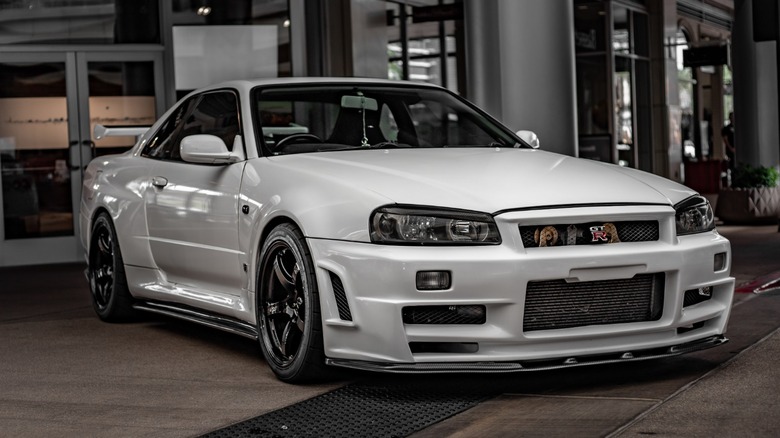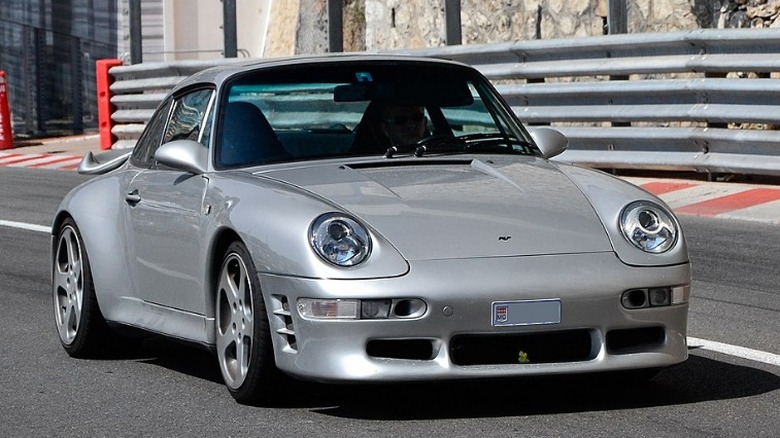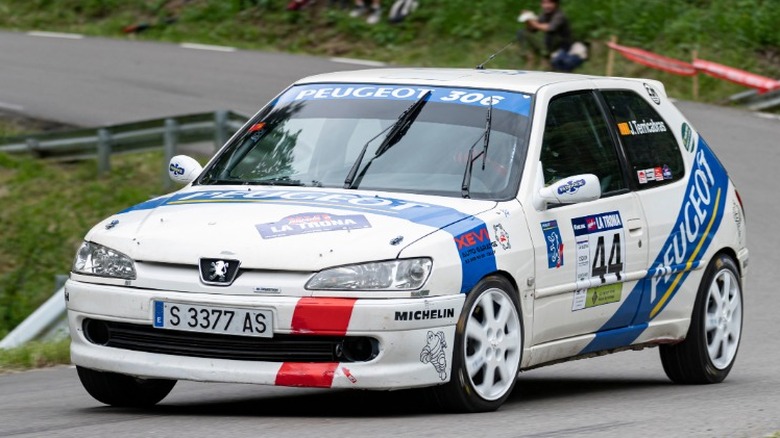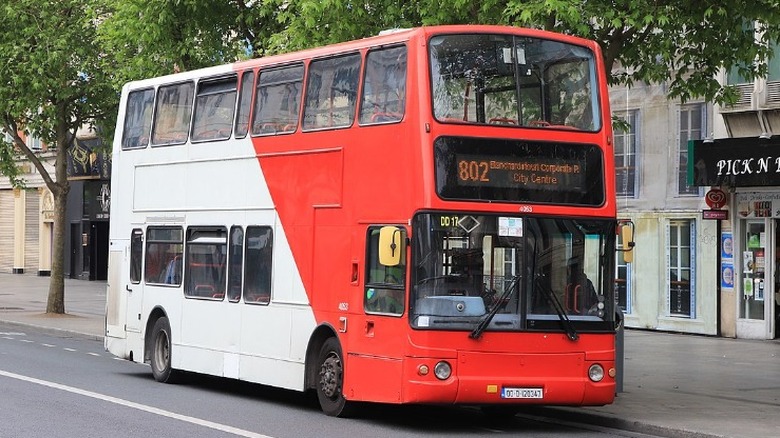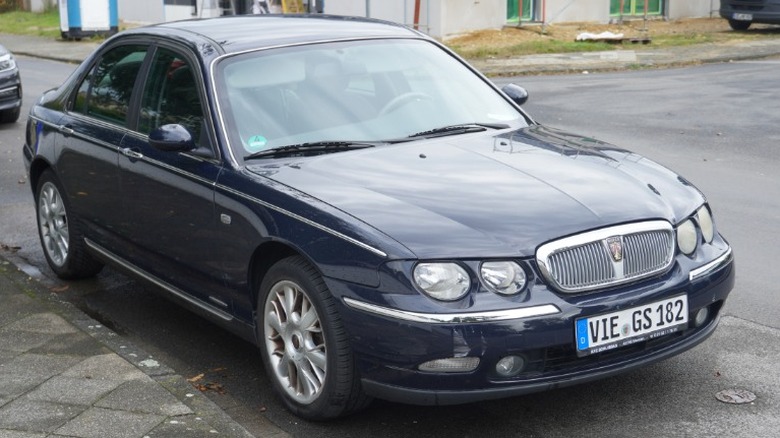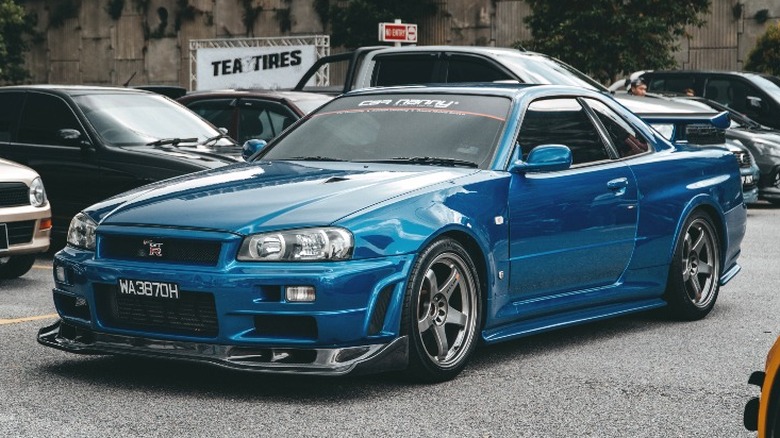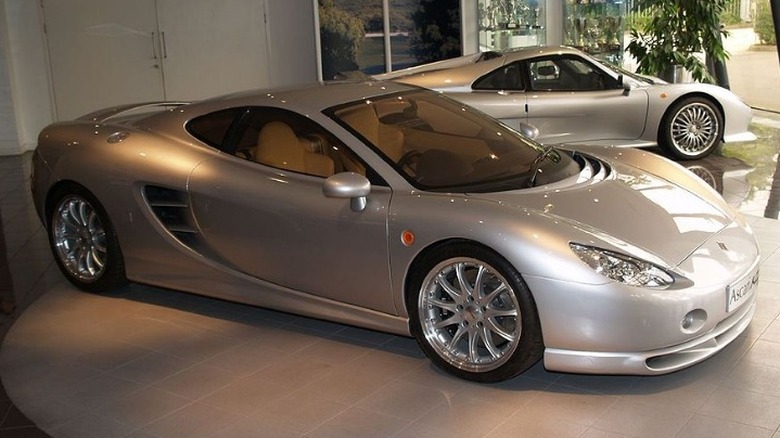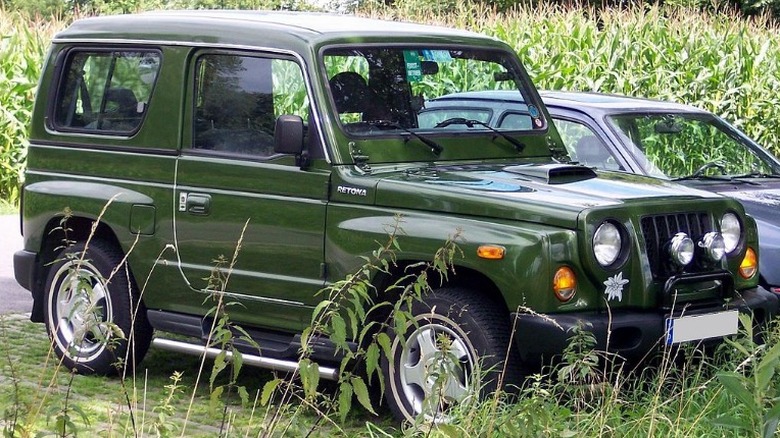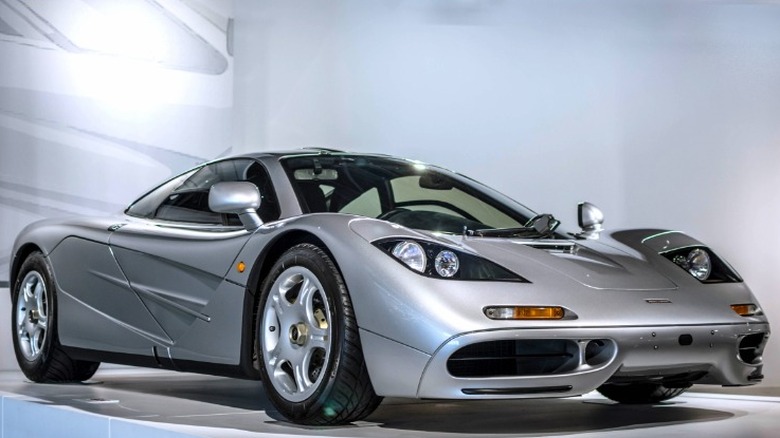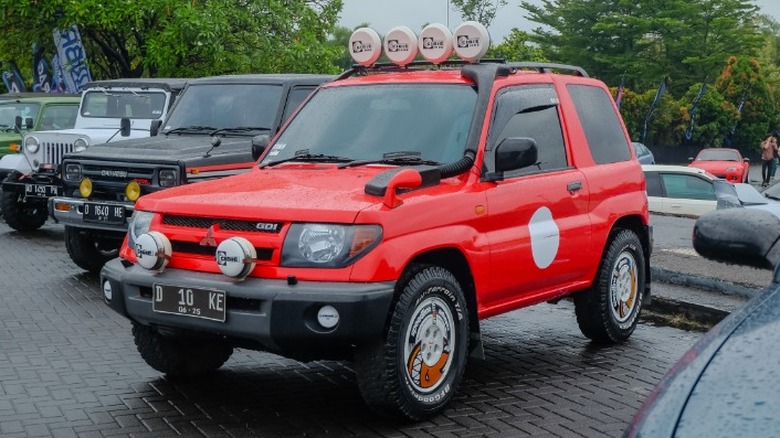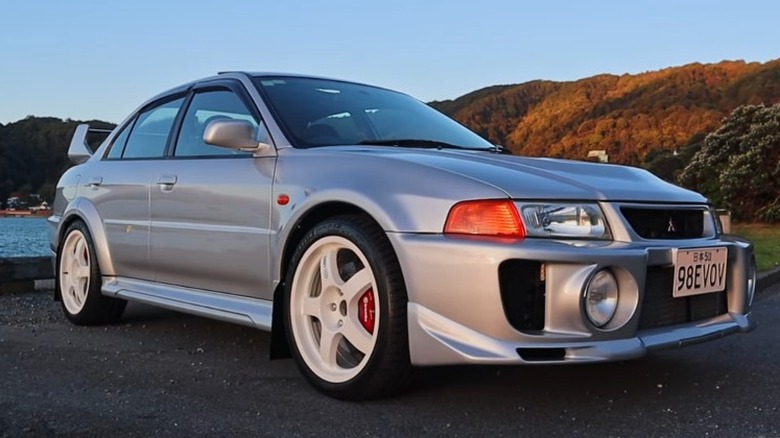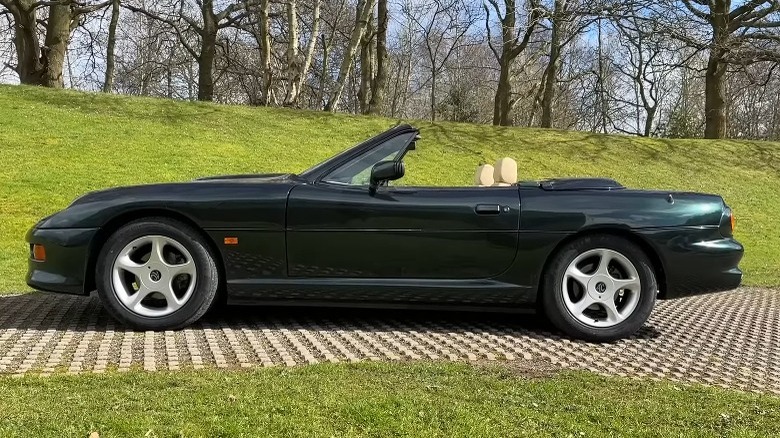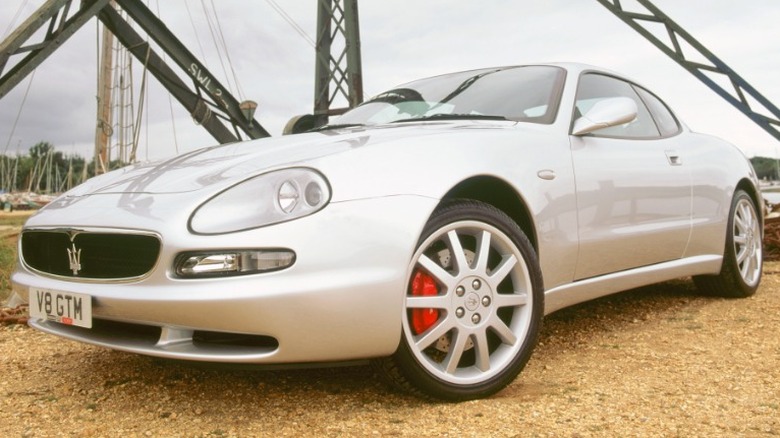12 Awesome Cars Finally Legal To Import In 2023
At one time in American history, you could import pretty much any car you wanted. However, when regulations changed in the '70s and '80s that made imports more expensive, gray market conversions of foreign brands could often be imported for significantly less money. Eventually, there came a point when Americans were buying so many custom-modified Mercedes-Benz models that the manufacturer — worried about preserving the integrity of their brand — joined other interested parties in lobbying Congress to create a restriction on imported cars. Thus, the 25-year rule came to be in 1988 with the Imported Vehicle Safety Compliance Act.
Today, dozens of foreign cars are off the table for American drivers, including many desirable and unique models, including special editions and high-performance upgrades. Later, with the help of Bill Gates, a Show or Display exemption was carved out for low-production cars of particular interest, which allowed Gates to import and drive his Porsche 959 legally — although it was still limited to 2,500 road miles per year.
Despite these regulations, more foreign car models become eligible for unrestricted importation every year. Most of them are mundane and typical cars with no particularly desirable traits, but some are quite the opposite, including coveted supercars that have long existed as forbidden fruit for American car enthusiasts. Here is a look at 12 awesome cars that are finally legal to import in 2023.
RUF Turbo R Limited
While RUF cars are based on the venerable Porsche 911, they are a unique make and model with performance far exceeding the already powerful Porsche. In the '90s, auto engineering technology progressed steadily and exponentially such that peak horsepower from the beginning to the end of the decade jumped significantly. While Porsche injected its air-cooled and lightweight cars with ever-increasing power well over the 300 horsepower mark, RUF tuned them to the extreme.
RUF is a German tuning house with a long history of modifying and upgrading Porsche vehicles, making so many alterations that the company is legally considered a manufacturer. In the late '90s, Porsche chose to phase out water-cooled engine production with the 1998 model year, so RUF took one of them and created a fitting swan song for the outgoing engine. This car carries a flat-six boxer engine with twin turbos and creates 625 horsepower, the most ever from an air-cooled engine, which is paired with carbon-fiber bucket seats, carbon-ceramic brakes, and a custom sound system. It is otherwise trimmed nicely in fine leather with RUF custom badges and embossments, ensuring you know you are driving something special.
With only seven produced and a value close to $2 million, it would surely qualify for Show or Display, but now it can be driven as much as you want — if you ever happen to find one.
[Featured image by Alexandre Prévot via Wikimedia Commons | Cropped and scaled | CC BY 2.0]
Peugeot 306 Rallye
Peugeot sold cars in the US for years, but sales slowly dwindled until the company left the market in 1991. Many interesting cars have come from the French automaker in the decades since –- we just haven't been able to get them. With 25 years since 1998 rolled around, we can now enjoy an excellent hatchback from the country that was produced for just two years in 1998 and 1999 — the Peugeot 306 Rallye.
The '90s are peppered with hatchback cars from all automaking countries, although some are more exciting than others. Peugeot introduced the 306 in 1993, bringing to the European market an attractive and well-engineered car for the masses that drove as good as it looked. It proved a success, and a couple of years later, Peugeot introduced the GTi-6 variant with a twin-cam engine with up to 167 horsepower backed by a six-speed manual. This lively and efficient car brought a bit of excitement to a great platform and led to the Rallye version in 1998.
To gain an advantage in rally racing, shedding weight is a must. With that in mind, the Rallye 306 used the same mechanicals as the GTi-6 but could eliminate up to 143 pounds by dropping luxuries such as air conditioning and fitting the interior with lightweight cloth and manual accessories. While this model is not likely to hit any more rally circuits, this year it can hit your driveway.
Plaxton President
For decades, double-decker buses have roamed the streets of London, not only serving to get commuters from one location to another but also ferrying tourists to Westminster Palace, Big Ben, or the Eye. Beyond riding one while on vacation, most Americans probably never think much about them.
However, this year is the first that you can legally import the excellent Plaxton President, a Volvo-powered bus with two floors and room for several families. Plaxton is a bus manufacturer from Northern England, and its 1998 President debuted with some much-needed changes to the traditional double-decker. It brought a streamlined front end and a much-needed low floor to the double-decker, features now seen as commonplace on modern buses. It later became one of London's most successful models.
Why would anyone care about a London bus being eligible for import? That is where your imagination comes in. The amount of attention you might draw in your own bus is immeasurable, and it can be the platform for a rolling party. Best of all, one could be imported for a camper conversion. There could be no better way to show up to the Coachella or Bonnaroo RV campground in your own two-story house, ready for partying at night and relaxing in the air conditioning by day.
Getting it imported and shipped to your driveway may be unimaginably costly and arduous, but this list isn't about whether you should import it — it's about whether you could. As of 2023, you can.
Rover 75
The British have a long and proud history of automobile manufacturing. Not only have they built up a robust and expansive auto industry, but the British have also established some of the finest luxury motorcar brands in the world, such as Rolls-Royce and Aston Martin. Sadly, one of their favored luxury marques — Rover — gets little exposure in the colonies, even though the company has made many excellent automobiles over the years, including the Queen's 1974 Rover P5.
Unfortunately for the British auto industry, all of the country's indigenous manufacturers were snapped up by foreign companies in the '90s, Rover included. BMW bought Rover in a package deal and then revived Mini while unceremoniously killing the rest. Still, before the final death knell hit the storied brand, it pushed out one last car in 1998, and it is brilliant.
The Rover 75 styling is sedate and sleek while avoiding the ostentatious flair of an Aston or Jaguar. The interior is replete with supple leather and wood grain, finishing a package suitable for a Prime Minister, which seems apt as Tony Blair used one for a time. These cars came well-equipped with climate control, satellite navigation, and power everything. Still, this was all for naught as sales were abysmal and while it was hoped to save the brand from annihilation, it may have accelerated its downfall. Now, 25 years on, you can have a little slice of conservative British luxury to call your own. The Queen would be proud.
Nissan Skyline R34 GT-R
Now that 2023 has arrived, it is legal to import what some might call the Holy Grail of JDM imports. The Nissan Skyline originated in the late '50s and morphed into one of the most sought-after performance coupes from the Japanese market. While it was a great car to begin with, being featured in the "Fast and Furious" films and a succession of video games starting in the '90s elevated it to the vaunted status it enjoys today.
The Skyline has been an upscale Nissan model the whole time, but the GT-R trim added along the way demonstrated what Nissan could do with six cylinders and a couple of turbos. The current GT-R available in North America is the latest version of the car with the Skyline moniker dropped. The RB26 ceramic twin-turbo straight-six engine in factory spec is rated at 276 horsepower, although many have suggested it is actually higher. While the stock power is respectable for 1998, it is well-known that some basic tweaks with the ECU mapping can push the power up to 350, and a modified GT-R can handle significantly more.
A lot of what drives the popularity of this car could be hype, but it is a fine automobile and a showcase of Nissan '90s engineering — one that anyone should want to drive if they dig Japanese cars. If this is your thing, bear in mind that the R34 began production in 1998 and reaching the 25-year limit will likely cause the price to rise above its already overvalued status.
Ascari Ecosse
If you have ever wanted a beautiful English-made supercar powered by a BMW V8 from a boutique automaker, your time has come. Ascari automobiles began in the mid-'90s and enlisted Lee Noble, creator of Noble supercars, to design the cars. Noble first created a supercar prototype using a Chevrolet V8 engine, but when he released a final production car, it was powered by BMW.
Ascari is named for F1 World Champion Alberto Ascari. Although it was the '90s, Ascari used forward-thinking and advanced technology in the manufacture of its cars. The Ecosse was released in 1998, featuring a spaceframe chassis wrapped in a Kevlar and fiberglass body. The 4.4-liter BMW V8 is good for 304 horsepower, but with a curb weight of just under 2,800 pounds, the Ecosse can hit 200 mph. Unlike some boutique supercars of the period, the Ecosse came well-equipped. The interior is covered in high-quality leather and is paired with air conditioning power windows and an excellent stereo system.
Since this was a niche-market car, no crash or emissions testing was done for export to the U.S., which made it ineligible for importation. Now that the requisite time has passed, you can import one. However, as only 19 cars were built, finding one may be a bit difficult.
[Featured image by Darren via Wikimedia Commons | Cropped and scaled | CC BY 2.0]
Kia Retona
The '90s were a formative time for Kia, whose current models such as the Stinger GT and EV6 have shown that it is a serious contender in the market by providing upscale cars with excellent performance and equipment. When its cars first started showing up in the U.S. most of them were the Sportage, but not everyone realizes that the company produced a boxy yet attractive Jeep-like vehicle called Retona at the same time.
The Retona debuted in 1998 and was driven by a turbo-diesel four-cylinder with an intercooler and four-wheel drive. For those who like small 4X4 vehicles, this one is appealing, with styling that looks a bit like it crosses a Jeep Wrangler with a Land Rover Defender. Unlike those off-road icons, the power on this one is on the low side. Its 82 horsepower is far from groundbreaking, although the torque of 144 ft-lb is more attractive. With a weight of 3,329 pounds, it is capable enough, and the two-liter diesel engine is sure to be thrifty.
Now that 25 years have passed, you can import one legally. It certainly will be a hard one to find, though. More importantly, issues with build quality plagued Kia at that time, and stories of Sportages requiring repair abound from mechanics working at the time. So, now that you can import one, you may want to ask yourself — should you?
[Featured image by Stahlkocher via Wikimedia Commons | Cropped and scaled | CC BY-SA 3.0]
McLaren F1
Few people would find it hard to argue that the McLaren F1 is an automotive masterpiece. It held the record as the fastest production car for years and introduced the public to McLaren's incredible prowess for building road-going cars.
The F1 was the first car to be built with an entire carbon fiber tub to which all the rest of the bits were fastened. Retooling a BMW-sourced V12 engine allowed McLaren to squeeze up to 680 horsepower from it, an incredible amount of power for the time, and the styling is timeless. Inside is the coup de grâce, the seating position. Much like a genuine F1 driver in a real race car, the F1 driver sits in the middle, although, unlike a real race car, the driver's seat is flanked by passenger seating on either side, and all three are covered in Alcantara. It is an amazing car.
It is no secret that the F1 is a great car, and with an initial release in 1992, there are already examples more than 25 years old. However, the final year of production was 1998, so it will be legal this year to import and drive any of them. Many have been imported under show and display rules, and they will all be released to drive as many miles as wanted — although nobody will. With values shooting up towards $20 million and an incredibly expensive maintenance regimen, some of these cars are lucky to get 100 miles a year put on them, making the lifting of the import ban essentially moot.
Mitsubishi Pajero iO
The Mitsubishi Pajero is a long-running model of rugged SUV that was marketed in the United States as both the Dodge Raider and Mitsubishi Montero. It was a fixture on American roads until it was finally discontinued in 2021. However, Mitsubishi created a smaller version in 1998 that never arrived in our ports — the Pajero iO.
The smaller 4x4 was not limited to the Japanese market, as production also took place in Italy. The iO appeared in 1998 with a 1.8-liter gasoline engine with direct injection -– cutting-edge technology for the year -– and the exterior styling was done by Pininfarina. It may not be comparable to the beautiful Ferrari models from the famous Italian styling house, but the results are attractive nonetheless. With its 120-horsepower engine comes a viscous 4WD system that allows for transfer case changes on-the-fly into one of four operational modes.
Mitsubishi released this as a competitor to the Toyota RAV4 and Honda CR-V, but sales were disappointing. It was much more of a small truck compared to those crossover car-based vehicles. Still, it is a capable little vehicle that holds its own on the trail, even if city driving is less comfortable. It was sold in Australia, where it was relatively popular, until 2005, but the model soldiered on in Brazil until 2015. None of them came to the U.S. during any period, but now that 25 years have passed, it is ready to help drivers reach the Appalachian Trail.
Mitsubishi Lancer Evo V
Mitsubishi has always been more of a niche manufacturer within the American market. First entering only as rebadged crossover Chrysler vehicles, Mitsubishi now only offers a couple of models and its range has never been more than a handful of cars, trucks, and SUVs. Still, its compact Lancer sedan has been morphed into an asphalt-killing little screamer with the Lancer Evolution.
As a popular model featured in the "Fast and Furious" movies and several video games, its popularity rose along with other foreign models like the Skyline. Responding to consumer pressure, Mitsubishi finally brought over the 2003 Evo VIII. However, the Evo debuted in 1992 and American drivers just missed out on those models. Now the Lancer Evo V is eligible for import, which is a good thing for fans of quick Japanese-market cars.
Mitsubishi did a great job with these factory-mod cars. All of them look great, and the Evo V is a particularly stunning example. It has an aggressive body kit with giant bug-eye fog lights and a tall trapezoidal-shaped rear spoiler. Even better than the styling is the turbocharged inline-4 that cranked out 280 horsepower in 1998, a figure that American V8 engines were barely surpassing. With a clever AWD system, the Evo V is a very desirable import car to own. Now that it is 25, it is ready for the American streets.
AC Ace
When Carroll Shelby wanted to introduce a new track car stuffed with a powerful V8 engine to the American market, he first ventured across the pond to England. There he met with the chaps at AC Cars and struck a deal to get their Ace model shipped over and fitted with said powerful engines. The rest, as they say, is history. Yet, AC Cars were not history when that venture concluded, including the Ace.
AC never built in significant quantities, and the Cobra may have been its highest-volume car. Furthermore, ownership changed many times over the years, resulting in only a few cars being built of any model. But the Ace name was revived in the '90s, and the second iteration of the AC Ace debuted in 1998. This model is similar to the original but updated with '90s sensibilities and style. This two-seater drop-top car is an innovative sports car with cues from cars like the Miata and Camaro but built stoutly with a stainless steel monocoque chassis and rolled aluminum body panels. It is equipped with a Ford V8 with up to 320 horsepower in the supercharged version. Inside is an elegant affair with generous helpings of leather and wood trim, making it an excellent package for weekend cruising.
Importing a Brooklands Ace would make for a unique conversation piece. It would likely be a fun driving car with many readily available Ford replacement parts. However, barely more than 100 were built, so now that it is legal to import, it may be impossible to do so.
Maserati 3200GT
Of all the cars becoming legal to import, this one should be a top pick. Since it could not be imported into the United States and was never sold here domestically, most Americans probably know little of it. When Maserati left the market, its cars were abundant with straight lines and sharp creases, continuing like that for several years. The 3200GT ended that and introduced a car brimming with swoops and curves, bringing it into the modern age. The new car was then and is now beautiful and befitting of what a Maserati should look like, a svelt combination of speed and elegance.
Looking beyond the styling, the 3200GT brings with it a 3.2-liter V8 hooked up to a pair of turbochargers and collaboratively pushing 370 horsepower through a six-speed ZF gearbox, which are truly impressive specs for 1998. Another clever and novel feature that happens to be one of its highlights is the boomerang tail lights hugging the upper rear corners of the car — which are also the first instance of exterior LED used on an automobile.
Maserati pulled out of the American market in 1993 after selling there for decades. Quality issues plagued those late-'80s cars and ruined their reputation. The 1998 model should be better, but it is still an expensive Italian luxury car, so miracles should not be expected. Still, if you are ready to accept whatever comes with a rare beauty such as this, now is the time to start your search.
